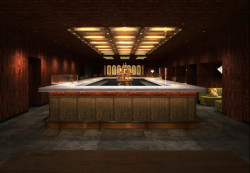
October 22, 2009
Tibetan Treasures
Buddhist art cries freedom from behind the Bamboo Curtain
By Metropolis
Originally published on metropolis.co.jp on October 2009

Standing Sahasrabhuja Avalokitesvara, 17th-18th century, The Norbulingka, gold-plated bronze, turquoise, 77cm
Photos by C.B. Liddell

Standing Yuganaddha Yamantaka, 18th century, Chengde Administration of Cultural Heritage, gold-plated bronze, 133cm
Every country on the face of the Earth now recognizes Tibet as an integral part of China. This is understandable. China is fast becoming the chief industrial powerhouse of the global economy, and it wouldn’t do to upset them now, would it? So, congratulations, President Obama, for snubbing that symbol of Tibetan defiance, the Dalai Lama, on his recent visit to the US.
But while the dream of Tibetan freedom bleeds to death—a sacrificial lamb on the altar of Superpower cordiality—the irrepressible fact of Tibet’s cultural uniqueness and spiritual independence continues to resonate across the world through its art and religion, as a visit to “Tibet: Treasures from the Roof of the World” demonstrates.
Surprisingly, this exhibition, which does so much to send out a signal of the Himalayan land’s distinctly un-Chinese identity, is entirely sourced from palaces, temples and museums under Beijing’s control. Included are works from both China proper and the so-called “Tibetan Autonomous Region”—apparently, since I was last at school, “autonomous” has changed its meaning to “heavily occupied with life sentences of forced labor for free speech.” Anyway, at least the Chinese don’t try to pretend that Tibet doesn’t exist, the same way the Turks do with Kurdistan.
Trendy and popular with the same influential Western demographic that disapproves of whale hunting, Tibet is an undeniable fact that the Chinese government has to deal with. They do this by pretending everyone is happy (this exhibition is probably intended to reinforce that impression), jailing anyone who suggests otherwise and propagating false history, like the claim that Tibet has politically been part of China since the Yuan Dynasty (1271–1368), when both countries were actually provinces of the Mongol Empire.

Seated Virupa, 16th century, Mindroling Monastery, gold-plated bronze, 105cm
Featuring over 100 pieces, including statues, ornaments, costumes, ceramics and utensils, the exhibition not only shows a singular culture but suggests that the roots of this civilization run overwhelmingly south to India rather than east to China.
The highlight of the show is a series of life-sized, gold-plated bronze sculptures of mahasiddhas from Tibet’s Mindroling monastery. Mahasiddhas were famed adepts from India who lived in the early medieval period, handing down Buddhist teachings and developing the practices of Tantric Buddhism now associated with Tibet.
Compared to similar sized works of Buddhist statuary in Japan, these 16th-century sculptures are very well preserved, probably something to do with the dry rarified air of Tibet, a factor as conducive to spiritual contemplation as it is inimical to mold and rust.
Not only is the subject matter Indian, but the artistic energy that these works emit reveals a strong aesthetic debt to the dynamism and sensuality of the Subcontinent’s sculpture. Unlike the overly serene and often dull statues of Buddhist figures gathering dust in Japanese temples, the Seated Damarupa fixes you with an intense stare, tilts his head, and raises his hands as if about to leap up and dance.
The corpulence of the Seated Virupa reveals that he was also something of a Friar Tuck character—a holy man fond of his food and drink. One famous story tells of how he used his mystical powers to stop the sun moving so he could take full advantage of a tavern’s limited-time, all-you-can-drink offer. The delicate pose of his hands and the shadows these cast on his belly gives his bulk an unlikely elegance.

Cham chas Costume, modern, The Potala, bamboo, fabric, lacquerware
Other notable works include a sinuous and sensual Standing Maitrya (11th-12th century), a Standing Sahasrabhuja Avalokitesvara (17th-18th century), a mercy god with 1,000 arms, and a large Standing Yuganaddha Yamantaka (18th century) that shows two copulating deities.
The lush imagination, spiritual energy, and uninhibited freedom of these pieces sound a note that is completely at odds with the materialism, callousness and brutality of the present rulers of Tibet.
Ueno Royal Museum
Tibet: Treasures from the Roof of the World. Various media. Until Jan 11, ¥800 (elem, MS)/¥1,200 (HS, univ)/¥1,400 (adult). 1-2 Ueno Park, Taito-ku. Tel: 03-3833-4191. Open Sat-Thu 10am-6pm, Fri 10am-8pm. Nearest stn: Ueno. www.ueno-mori.org







